

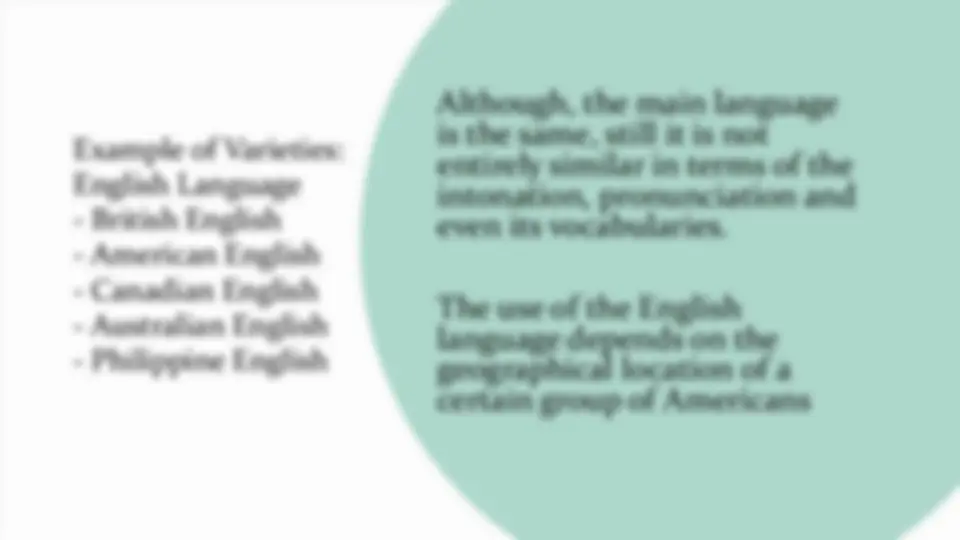
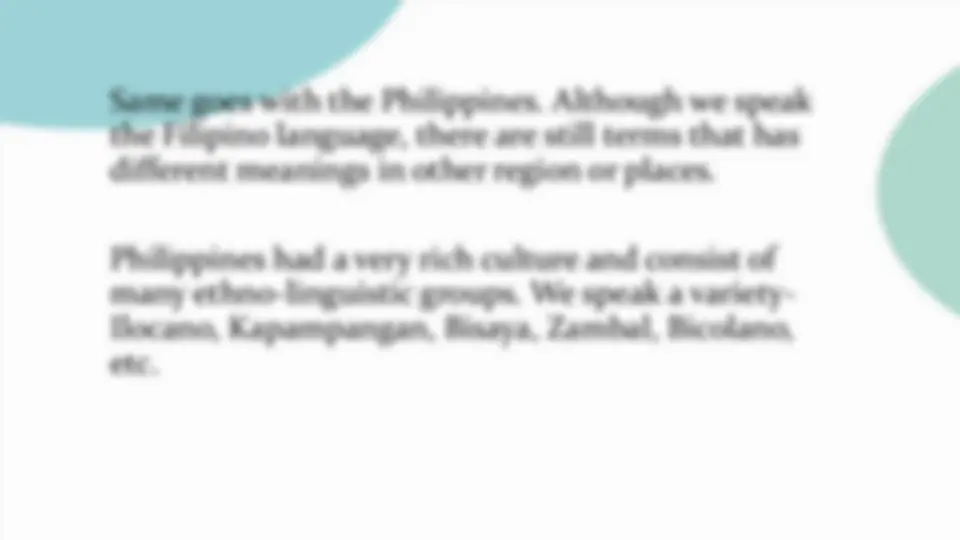
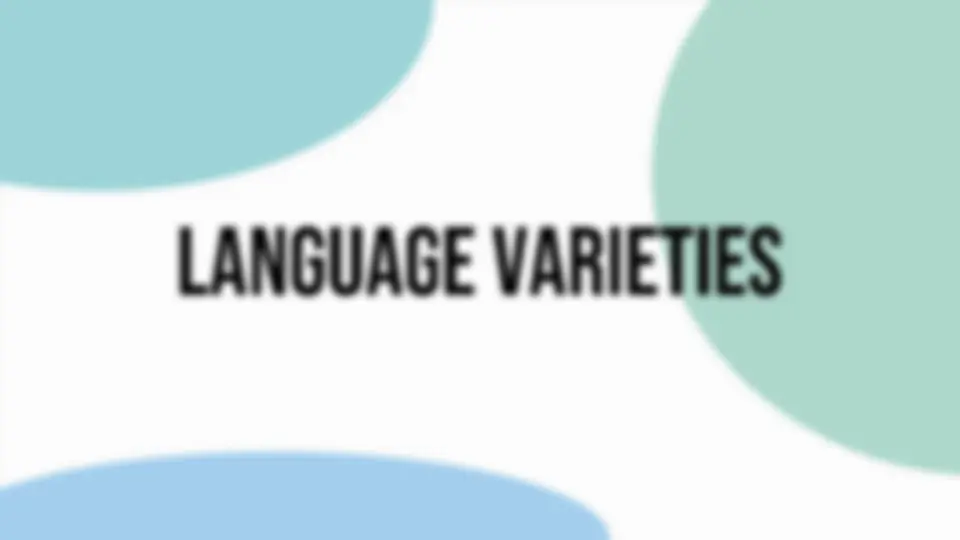
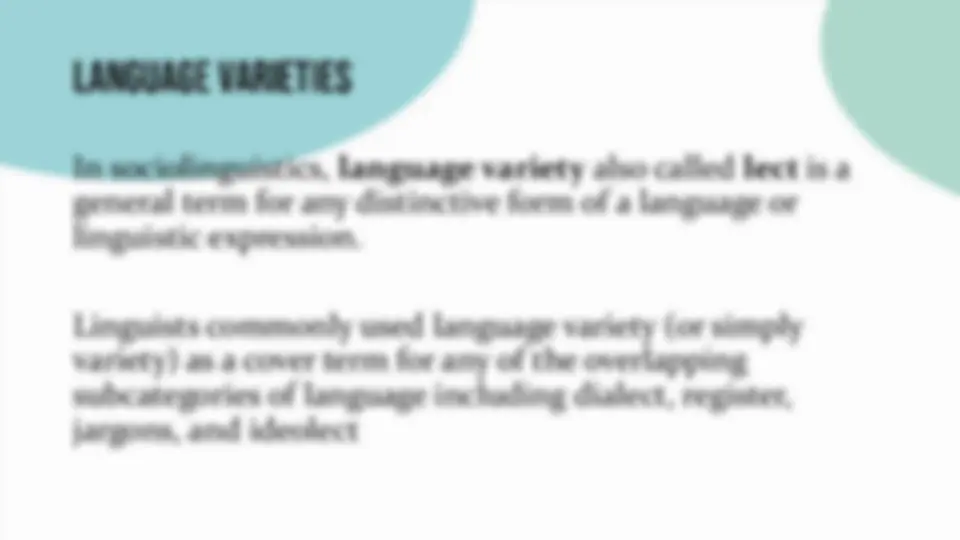
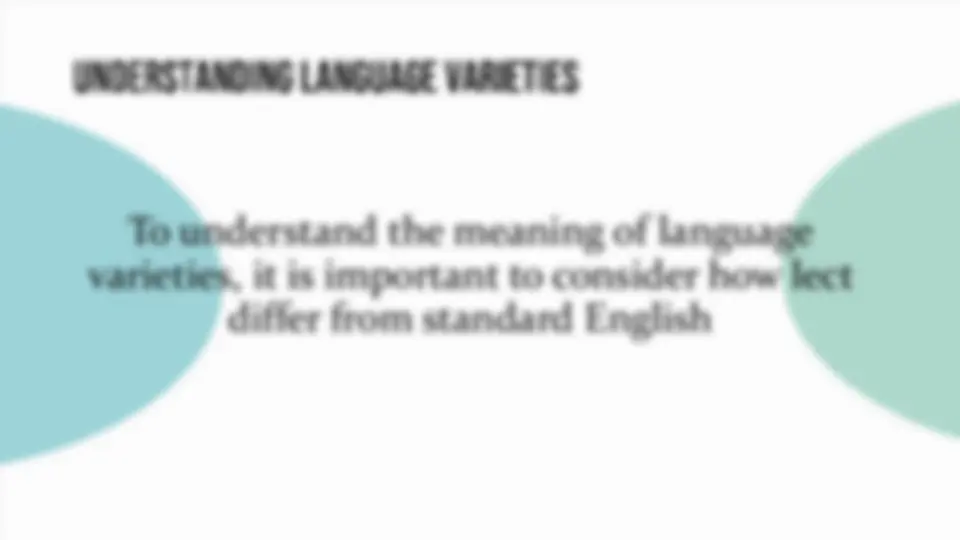
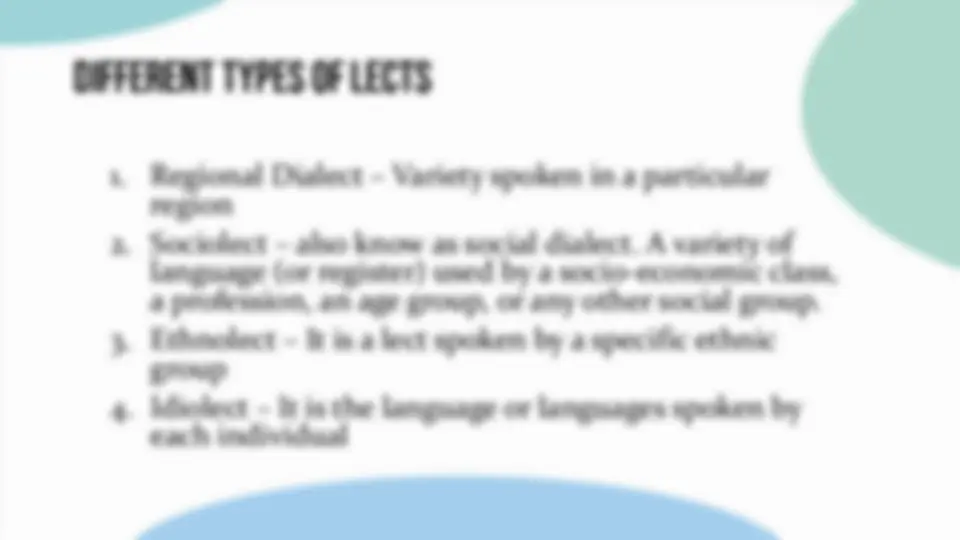
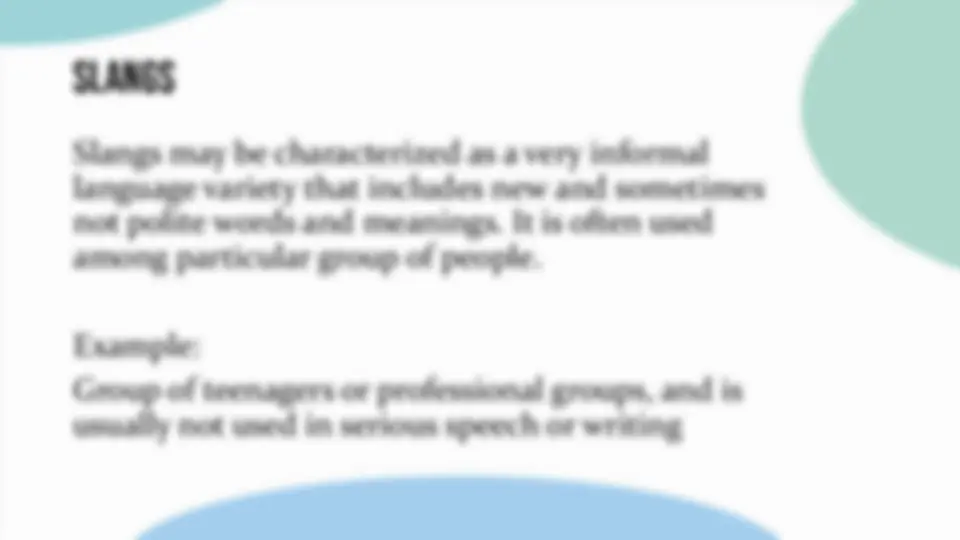
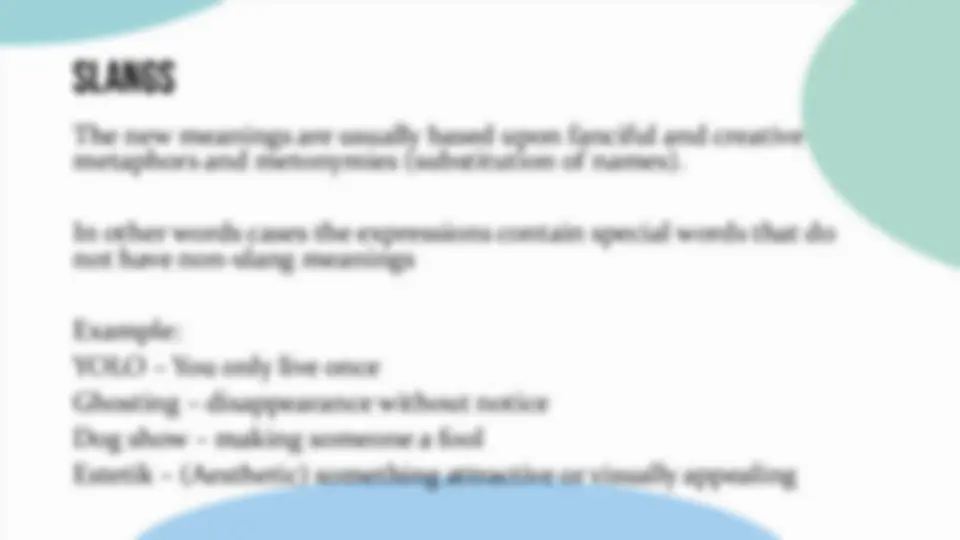

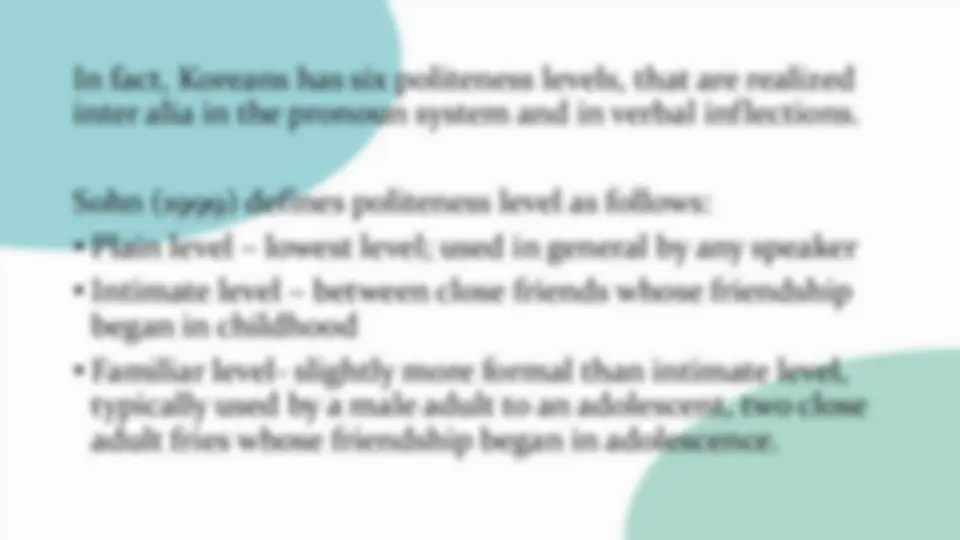



Study with the several resources on Docsity

Earn points by helping other students or get them with a premium plan


Prepare for your exams
Study with the several resources on Docsity

Earn points to download
Earn points by helping other students or get them with a premium plan
Community
Ask the community for help and clear up your study doubts
Discover the best universities in your country according to Docsity users
Free resources
Download our free guides on studying techniques, anxiety management strategies, and thesis advice from Docsity tutors
An in-depth exploration of language varieties, focusing on dialects, registers, jargons, and idiolects. It delves into the concept of language variety, its importance, and its subcategories, such as regional dialects, sociolects, ethnolects, and slangs. The document also discusses the role of language in establishing and maintaining human relationships, using korean as an example. It concludes with an analysis of politeness levels in korean, highlighting the significance of language in social hierarchy.
Typology: Summaries
1 / 20

This page cannot be seen from the preview
Don't miss anything!













Although, the main language is the same, still it is not entirely similar in terms of the intonation, pronunciation and even its vocabularies. The use of the English language depends on the geographical location of a certain group of Americans Example of Varieties: English Language
Same goes with the Philippines. Although we speak the Filipino language, there are still terms that has different meanings in other region or places. Philippines had a very rich culture and consist of many ethno-linguistic groups. We speak a variety- Ilocano, Kapampangan, Bisaya, Zambal, Bicolano, etc.
The language register on the other hand, is how the speaker uses the language depending on the situation/circumstance. It may be formal or informal depending on the person whom the speaker is talking to. Example:
The word dialect – which contains “lect” within the term – derives from the Greek word dia- meaning “across, between” and legein “speak”. A dialect is a regional or social variety of a language distinguished by pronunciation, grammar, and/or vocabulary.
Slangs may be characterized as a very informal language variety that includes new and sometimes not polite words and meanings. It is often used among particular group of people. Example: Group of teenagers or professional groups, and is usually not used in serious speech or writing
In fact, Koreans has six politeness levels, that are realized inter alia in the pronoun system and in verbal inflections. Sohn (1999) defines politeness level as follows:
Sohn (1999) defines politeness level as follows: